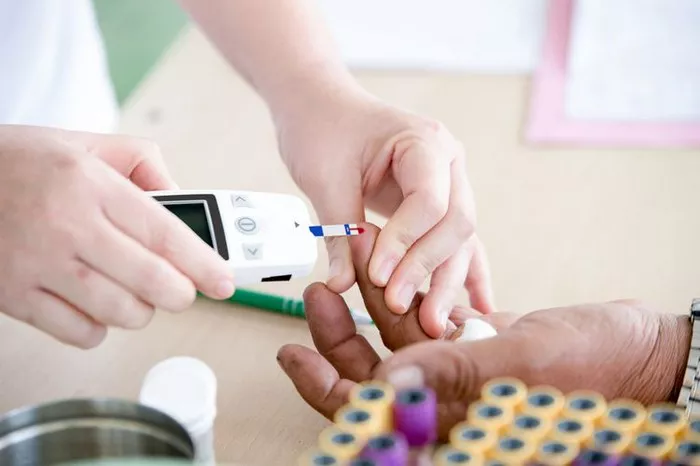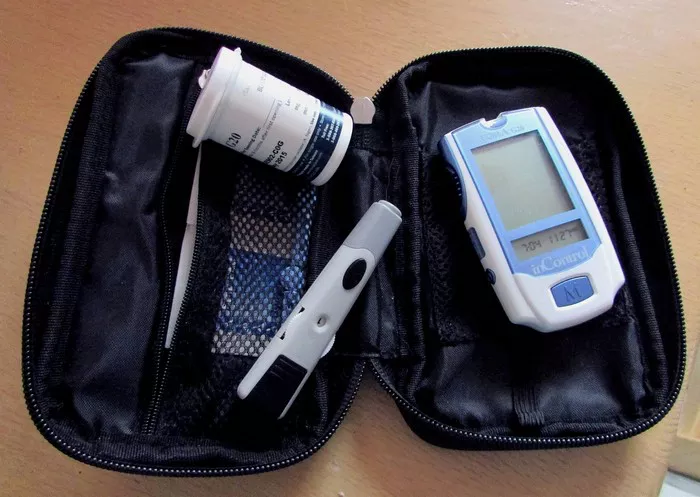Diabetes, a chronic condition characterized by elevated blood sugar levels, affects millions of people worldwide. While both Type 1 and Type 2 diabetes share the common symptom of high blood sugar, they are distinct conditions with different causes, treatments, and management strategies. Understanding the differences between Type 1 and Type 2 diabetes is crucial for effective management and prevention efforts.
Introduction to Diabetes
Diabetes mellitus, commonly referred to as diabetes, is a metabolic disorder that affects how the body uses glucose, the primary source of energy. Glucose comes from the food we eat and is transported into cells with the help of insulin, a hormone produced by the pancreas.
When the body either doesn’t produce enough insulin or becomes resistant to its effects, glucose builds up in the bloodstream, leading to high blood sugar levels. Over time, this can cause serious complications, including heart disease, stroke, kidney disease, nerve damage, and vision loss.
There are several types of diabetes, but Type 1 and Type 2 diabetes are the most common forms, each with distinct characteristics.
Understanding Type 1 Diabetes
Type 1 diabetes, formerly known as juvenile diabetes or insulin-dependent diabetes, is an autoimmune disease where the body’s immune system attacks and destroys the insulin-producing beta cells in the pancreas. As a result, the pancreas produces little to no insulin, leading to a deficiency of this vital hormone.
Type 1 diabetes typically develops in childhood or adolescence, although it can occur at any age. Its exact cause is still unknown, but genetic predisposition and environmental factors, such as viral infections, may play a role in triggering the autoimmune response.
Individuals with Type 1 diabetes require insulin therapy to survive. Without exogenous insulin injections or the use of an insulin pump, they cannot regulate their blood sugar levels effectively. This lifelong dependence on insulin distinguishes Type 1 diabetes from other forms of the condition.
Symptoms of Type 1 diabetes often appear suddenly and include increased thirst, frequent urination, extreme hunger, unintended weight loss, fatigue, and blurred vision. If left untreated, Type 1 diabetes can lead to diabetic ketoacidosis (DKA), a life-threatening complication characterized by high blood sugar levels and the presence of ketones in the urine.
Understanding Type 2 Diabetes
Type 2 diabetes, formerly known as adult-onset diabetes or non-insulin-dependent diabetes, is the most common form of diabetes, accounting for the majority of cases worldwide. Unlike Type 1 diabetes, Type 2 diabetes develops gradually and is often associated with lifestyle factors such as obesity, physical inactivity, and poor diet.
In Type 2 diabetes, the body either becomes resistant to insulin or doesn’t produce enough insulin to maintain normal blood sugar levels. Initially, the pancreas may compensate by producing extra insulin, but over time, it may lose its ability to do so effectively.
Risk factors for Type 2 diabetes include being overweight or obese, having a family history of diabetes, being over the age of 45, leading a sedentary lifestyle, and having certain ethnic backgrounds, such as African American, Hispanic, Native American, or Asian American.
Unlike Type 1 diabetes, which typically requires insulin therapy, Type 2 diabetes may be managed through lifestyle modifications, oral medications, injectable medications, or a combination of these approaches. Lifestyle changes, including adopting a healthy diet, increasing physical activity, and losing weight, are often recommended as the first line of treatment for Type 2 diabetes.
Symptoms of Type 2 diabetes may develop gradually and include increased thirst, frequent urination, fatigue, blurred vision, slow wound healing, and recurrent infections. Many individuals with Type 2 diabetes may remain undiagnosed for years, as the condition progresses silently, causing damage to organs and blood vessels.
Key Differences Between Type 1 and Type 2 Diabetes
Cause: Type 1 diabetes is an autoimmune disease resulting from the destruction of insulin-producing beta cells in the pancreas, whereas Type 2 diabetes is primarily caused by insulin resistance and inadequate insulin production, often linked to lifestyle factors.
Age of Onset: Type 1 diabetes typically develops in childhood or adolescence, although it can occur at any age, whereas Type 2 diabetes is more commonly diagnosed in adults over the age of 45, although rates are increasing among younger populations due to rising obesity rates.
Dependency on Insulin: Individuals with Type 1 diabetes require exogenous insulin to survive because their pancreas does not produce enough insulin. In contrast, people with Type 2 diabetes may initially manage their condition with lifestyle changes, oral medications, or other non-insulin therapies, although some may eventually require insulin therapy as the disease progresses.
Symptom Onset: Symptoms of Type 1 diabetes often appear suddenly and may include extreme thirst, frequent urination, unintended weight loss, and fatigue. Symptoms of Type 2 diabetes may develop gradually and may be less severe, leading to delayed diagnosis and treatment.
Genetic Predisposition: While both Type 1 and Type 2 diabetes have a genetic component, individuals with a family history of Type 1 diabetes may have an increased risk of developing the condition, whereas family history, combined with lifestyle factors, plays a more significant role in the development of Type 2 diabetes.
Treatment Approach: Treatment for Type 1 diabetes primarily focuses on insulin therapy to replace the hormone that the body cannot produce. Treatment for Type 2 diabetes may include lifestyle modifications, oral medications, injectable medications, and, in some cases, insulin therapy, depending on the individual’s needs and disease progression.
Complications: Both Type 1 and Type 2 diabetes can lead to serious complications if left uncontrolled, including heart disease, stroke, kidney disease, nerve damage, and vision loss. However, individuals with Type 1 diabetes may be at a higher risk of developing diabetic ketoacidosis (DKA), a life-threatening condition characterized by high blood sugar levels and the presence of ketones in the urine.
Conclusion
Type 1 and Type 2 diabetes are distinct conditions with different causes, treatments, and management strategies. While both involve elevated blood sugar levels, Type 1 diabetes results from the autoimmune destruction of insulin-producing beta cells, whereas Type 2 diabetes is primarily driven by insulin resistance and inadequate insulin production, often associated with lifestyle factors.
Effective management of diabetes requires a comprehensive approach that includes regular monitoring of blood sugar levels, adherence to prescribed treatment plans, healthy lifestyle habits, and ongoing education and support. By understanding the differences between Type 1 and Type 2 diabetes, individuals can better manage their condition and reduce their risk of complications, leading to improved health and quality of life.

























